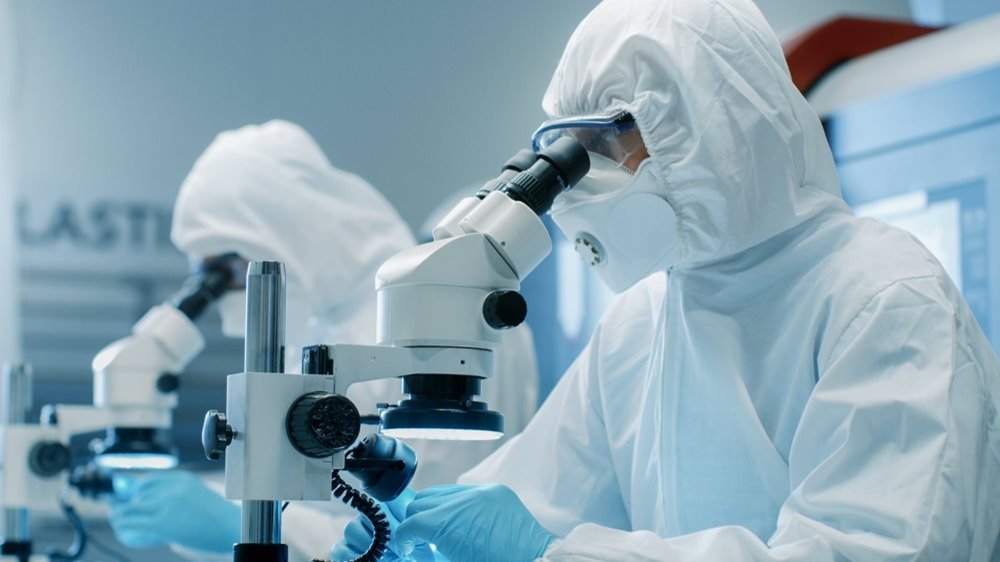Clean Room Testing

What is clean room testing?
Clean room testing is the process of monitoring the air quality in a clean room to verify it meets test specifications and relevant test standards like ISO14644-1, ISO 144644-2 and ISO 14644-3.
Testing your clean room is essential to achieve contamination-free research and manufacturing as well as efficient operation and financial saving. Manufacturers of semiconductors, flat panel displays, and memory drives have extremely high requirements, and biotech and pharmaceutical companies, medical device manufacturers, healthcare facilities and other organizations that produce, store and test their products are regulated by law. The sensitive technologies handled in clean rooms require careful vigilance—a single speck of dust, for example, has the potential to destroy a semiconductor’s microscopic electronic components. To maintain a controlled environment, clean rooms are pressurized with filtered air, regulated by ISO, IEST and cGMP standards, and tested annually with the following methods and equipment.
Portable particle counters can be utilized for continuous monitoring, but they and handheld particle counters are typically used in the authentication and confirmation of the continuous monitoring counter and in localizing the source of particles. A variety of manufactures, including Particle Measuring Systems, Fluke, and Met One, supply clean room particle counters with top models like: Watch this short video for an overview of the Fluke 985 particle counter:
Depending on your preferred manufacturer, there are a variety of temperature and humidity meters that can perform testing in a clean room. We recommend the Fluke 975V AirMeter with Velocity Probe because it performs both temperature and humidity testing along with air flow and velocity. Learn more about the operation of temperature and humidity meters, and consider these models:
Clean Room Testing Equipment
Particle Counters
The measurement of particles in the air is essential to a clean room setting. Particle counters are the ideal tool; these highly sensitive devices index how many particulates of a specified sizes are present. Most counters can be adjusted to the allowable threshold of the particle sizes. Ensuring the clean room always meets standards requires the installation of a continuous monitor particle counter that is always running. This practice is essential to maintaining a controlled environment and protecting products or equipment from contamination. The process of how particle counting should be performed is defined in ISO 14644-3.Portable particle counters can be utilized for continuous monitoring, but they and handheld particle counters are typically used in the authentication and confirmation of the continuous monitoring counter and in localizing the source of particles. A variety of manufactures, including Particle Measuring Systems, Fluke, and Met One, supply clean room particle counters with top models like: Watch this short video for an overview of the Fluke 985 particle counter:
Temperature and Humidity Testers
Temperature and humidity tests assess the ambient temperature and air humidity of the clean room, which can influence corrosion, hardening, expansion, or the growth of microorganisms on materials. Precision in temperature and humidity is therefore crucial to clean rooms. Some particle counters incorporate humidity measurement in their systems, but a temperature and humidity meter alone can also do the trick. A temperature and humidity meter measures both qualities with the option to plot and analyze levels over time. ISO 14644-3 requires clean room ventilation systems to maintain a strict temperature and humidity within limit values necessary for the clean room’s applications.Depending on your preferred manufacturer, there are a variety of temperature and humidity meters that can perform testing in a clean room. We recommend the Fluke 975V AirMeter with Velocity Probe because it performs both temperature and humidity testing along with air flow and velocity. Learn more about the operation of temperature and humidity meters, and consider these models:
Airflow Volume, Velocity and Pressurization Test Equipment
Proper airflow and the velocity of the air coming in and out of the clean room is necessary for maintaining accurate air patterns. Faulty ventilation systems drastically effect controlled environments, so testing to verify air volume, velocity and pressure changes is a must. Products like the Fluke 975V are designed specifically to perform these tests. In addition to proper airflow, pressurization monitoring of the room determines whether the differential pressure of the clean room is in accordance to design. Clean room standards determine levels of clean room and the proper pressurization help maintain their status.HEPA Filter Integrity Testers
HEPA filter integrity tests are performed to determine if there are leaks in the high-efficiency particulate arrestance (HEPA) filters which remove contaminants and establish a specified level of particles is present in the clean room. HEPA filter tests are performed with photometers, which allow the user to scan for pinhole leaks that could transmit contaminant particles. A photometer measures the light intensity of an unknown source in comparison with a standard source. ISO 14644-3 and CGMP both mandate HEPA filter leak tests.Other Clean Room Tests
- Air balancing - adjusts airflow in the air handling systems to achieve design specifications, room air exchange rates & pressure cascade
- Viable environmental monitoring (EM) - includes airborne and surface microbial tests
- Lights testing – ensure the comfort of workers in a properly lit environment
- Sound testing – protect employees from extreme noise levels in the manufacturing clean room environment
- Compressed gas testing - assures compressed gas sources meet the requirements of the controlled environment for contamination and microorganisms
- Other clean room tests as per IEST and/or ISO
Test Standards
- ISO 1644-3
- US FED STD 209E(FS209)
- Current Good Manufacturing Practices (cGMP)
- Institute of Environmental Sciences Technologies (IEST)
- CNBT